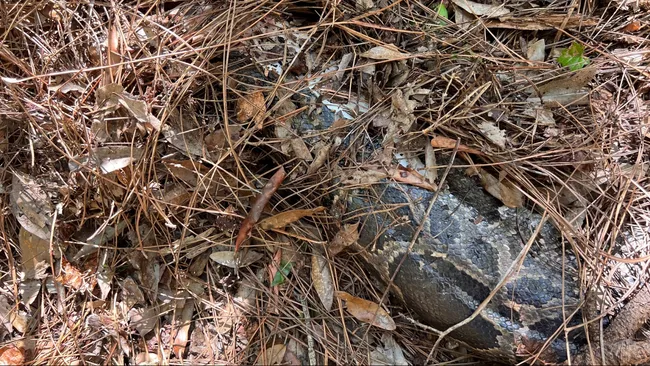Wildlife experts believe that predators native to the Everglades are beginning to fight back against the invasive species of snake.
Bobcat vs. Burmese Python: A Native Predator Strikes Back
In a rare and telling moment of ecological pushback, a Florida bobcat has taken down a 13-foot-long Burmese python—a striking development in the fight against invasive species in the Everglades.
Wildlife biologist Ian Bartoszek of the Conservancy of Southwest Florida discovered the remains of the massive snake in December 2022, near Naples, Florida. The python, nicknamed Loki, had been part of a research program using radio-tracked “scout” snakes to locate and remove breeding females in an effort to reduce the invasive population.
But instead of finding Loki with a female python, researchers came upon his freshly killed body, the head and neck chewed off and buried under pine needles—a sign that a large predator had struck.
“It was a bit sad and a bit exciting at the same time,” said Bartoszek. “We sort of treated it as a bit of a CSI crime scene.”
Caught on Camera: The Bobcat Returns
To identify the predator, Bartoszek worked with wild cat expert David Shindle from the U.S. Fish and Wildlife Service. They set up a trail camera near the site—and it paid off.
The next morning, the culprit returned: an adult bobcat, sniffing the area and inspecting its kill. The footage confirmed what biologists had only suspected until now—native predators are starting to recognize and hunt Burmese pythons.
This reversal is especially noteworthy because pythons have been known to prey on bobcats. But this time, the odds were in the bobcat’s favor. A recent cold snap had likely stunned the cold-blooded python, leaving it sluggish and unable to defend itself—a vulnerability the bobcat exploited.
A Turning Point in the Ecosystem?
This isn’t an isolated incident. Bartoszek’s team also found the remains of another python, likely killed by a black bear, following another cold snap earlier in the season.
“There’s a bit of a pattern emerging,” said Bartoszek. “Over time, the ecosystem is rebalancing itself. It’s fighting back.”
The Burmese python is an invasive species in Florida, originally introduced through the exotic pet trade. With no natural predators and a high reproductive rate, these snakes have severely disrupted native wildlife in the Everglades.
But these recent discoveries suggest a shift. As native species adapt to the presence of pythons, they may be learning to exploit them as a new food source—especially when environmental factors like temperature give them an advantage.
“It felt like ‘score one for the home team,’” Bartoszek said. “That’s a good sign.”
